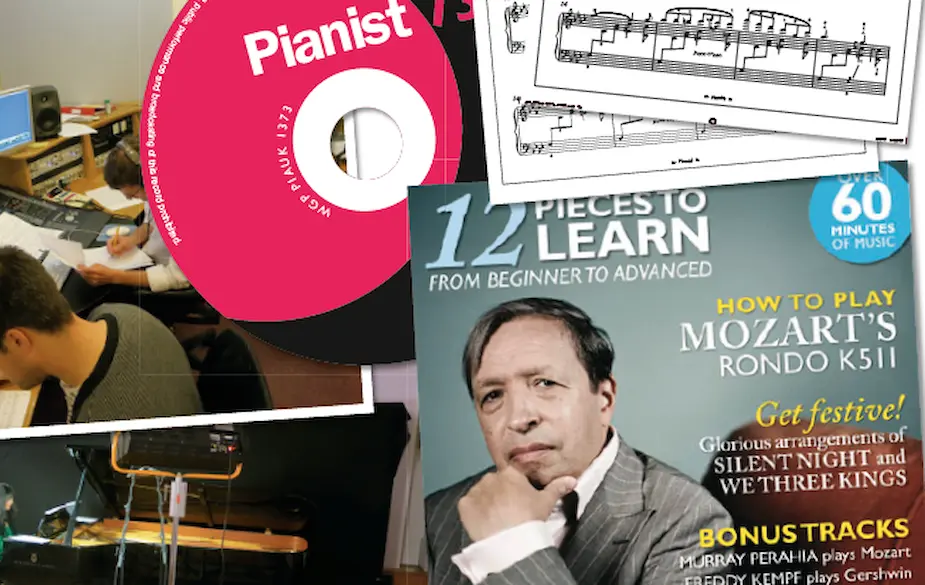08 August 2013
|
Ever wondered how Pianist chooses its sheet music? And how it finds the right balance between the standards and the rarities? Well, it's a big part of the editor's job, as Erica Worth explains
My background: If you’ve been reading Pianist for a while, you may have gathered that I’m a pianist. I grew up with the usual diet of Bach preludes and fugues, Beethoven sonatas, Scarlatti sonatas and the like. And as I progressed and went on my travels to music school, I studied the monumental pieces by such composers as Schubert, Schumann, Rachmaninov and Scriabin. (I preferred the meaty Romantics – Mozart scared me to death!) So by the end of my education, my repertoire was pretty conventional. My only foray into the more adventurous was the Samuel Barber Sonata. It was a mammoth task to learn it for my graduation recital, and I remember the feeling of hanging on for dear life as I performed it.
In my role as Editor of Pianist today, I might not have to play pieces to such a high standard, but I do have to keep my knowledge of the repertoire fresh. So how do I find new and interesting scores for the magazine – especially after 73 issues?
Firstly, I look at all the repertoire that I’ve been familiar with over the years. I have a huge pool of pieces, by all the well-known composers, and it would take another 20 years of the magazine just to get through that list.
We need unusual repertoire too though! I think it’s imperative in a ‘learning’ magazine such as Pianist to open up readers’ minds to new and unusual repertoire as well. There’s nothing like discovering a new piece for the first time – it’s a wondrous moment. I have loads of those wondrous moments myself as I look around for new repertoire.
My Paderewski discovery: This issue No 73's Scores, for example, include the Paderewski Nocturne op 16 no 4 (page 49), which I first stumbled across on a recording by Jonathan Plowright. This piece went straight to my heart and I knew I had to share it. (You can hear Jonathan play it for yourself on our covermount CD and you can also read his in-depth lesson on the piece on page 68.)
And my Massenet discovery: I discovered another hidden gem on a French piano concertos CD by Jean-Efflam Bavouzet. As a ‘bon-bon’ piece at the end of the disc, there was Massenet’s Impromptu No 1. I had almost overlooked it, and it was gorgeous! I couldn’t find the score and was so desperate to get my hands on it that I contacted Bavouzet directly. He was delighted to assist, and ended up handing me the score backstage after a concerto appearance at the Royal Festival Hall. It had all his fingerings on it too! More recently, I attended an all-Schubert recital by Imogen Cooper at the Wigmore Hall. I was entranced by her performance of Schubert German Dances D783, so I included one of them in this issue (Scores, page 36).
It's important to listen to my readers: Recitals and CDs are good sources for new repertoire ideas, but I listen to my readers too. I frequently receive correspondence asking for this or that piece. I can’t accommodate all, obviously, but I do try. Sometimes it seems the readers and I are thinking along the same lines. Last issue, for example, a reader wrote in asking for some studies by Stephen Heller – and I was already planning to include his L’Avalanche in this issue (page 33)!
The best is bringing it all together: The most gripping part of the process is when I think I have gathered a good combination of pieces together for an issue (different levels, different styles, different keys, the right number of pages to fit into the 40-page section – not easy!). I play them through, and it all comes together. It’s like building a recital programme.
Once everything is chosen, I receive expert guidance with regards to pedalling and fingering, in order to make our publication of a piece as good as it can possibly be. Then I send the scores to Chenyin Li, our house pianist, and she learns them all to perfection. Some weeks later Chenyin goes into the recording studio to record the Pianist CD, and hey presto, another Scores section and another CD under our belt. Before I know it, it’s time to start working on the next issue’s scores. But what a rewarding job it is.
Erica Worth wrote this article inside the current issue 73. Tempted to get your hands on the Scores inside that issue? Get issue 73 now!







